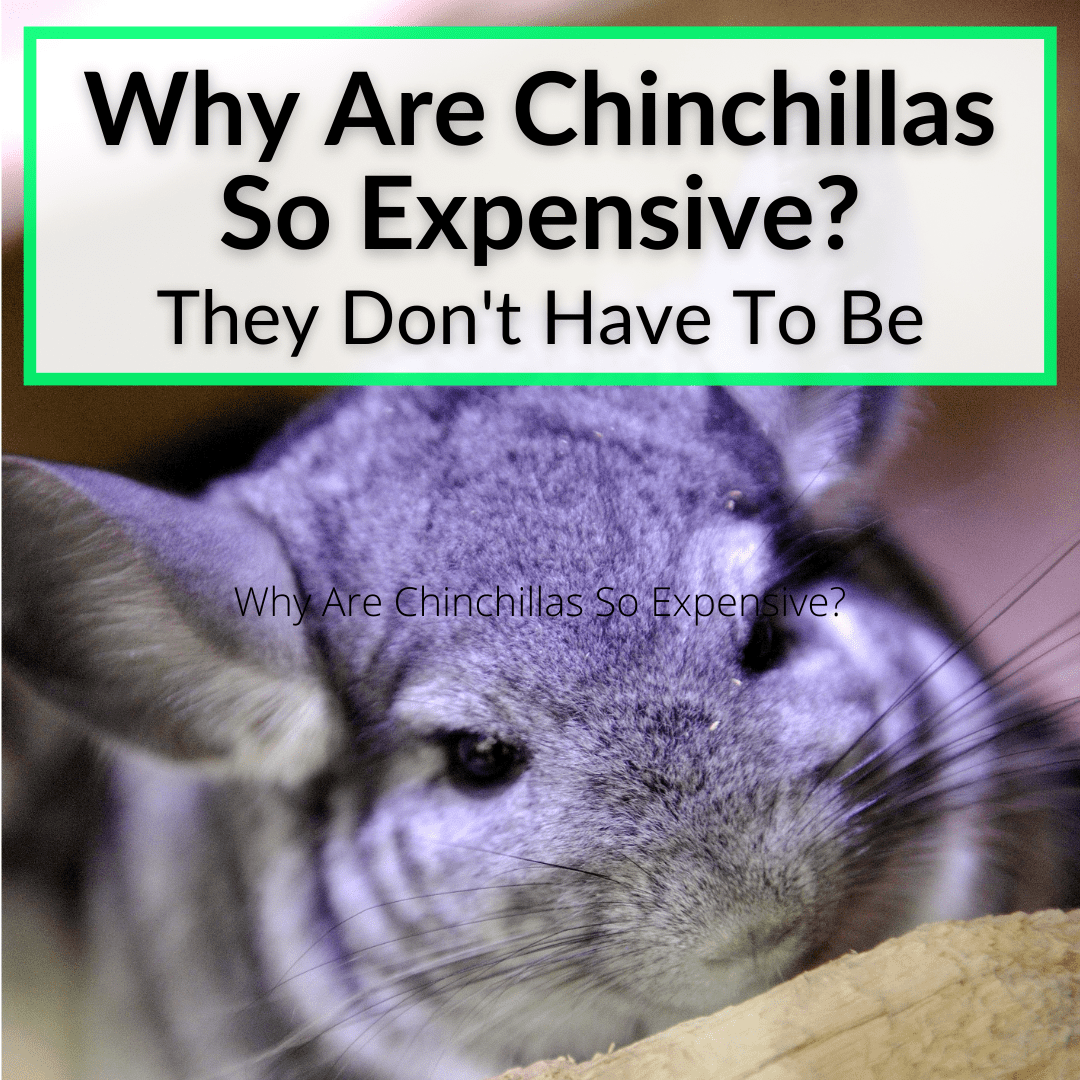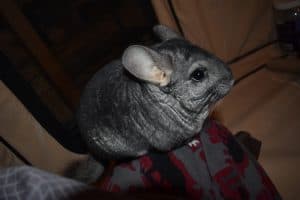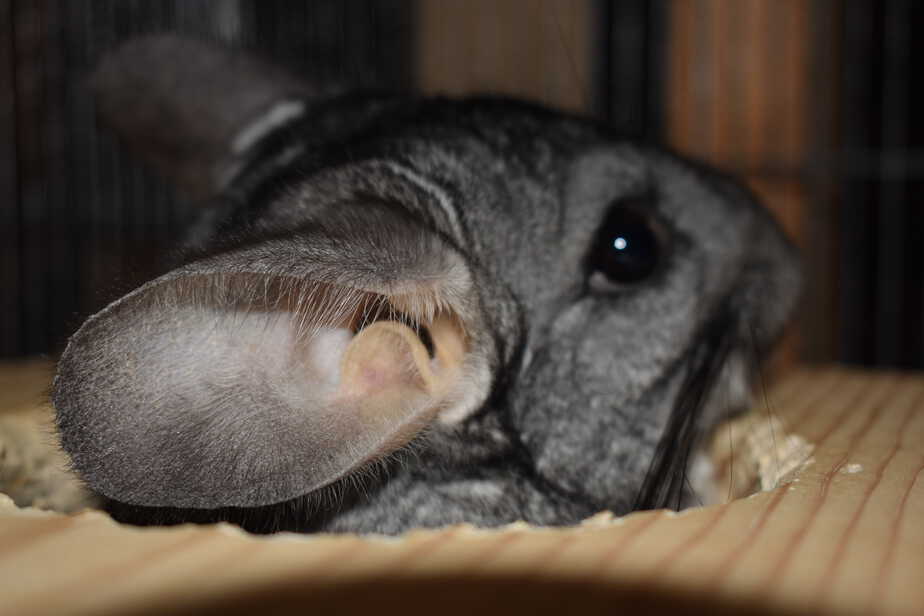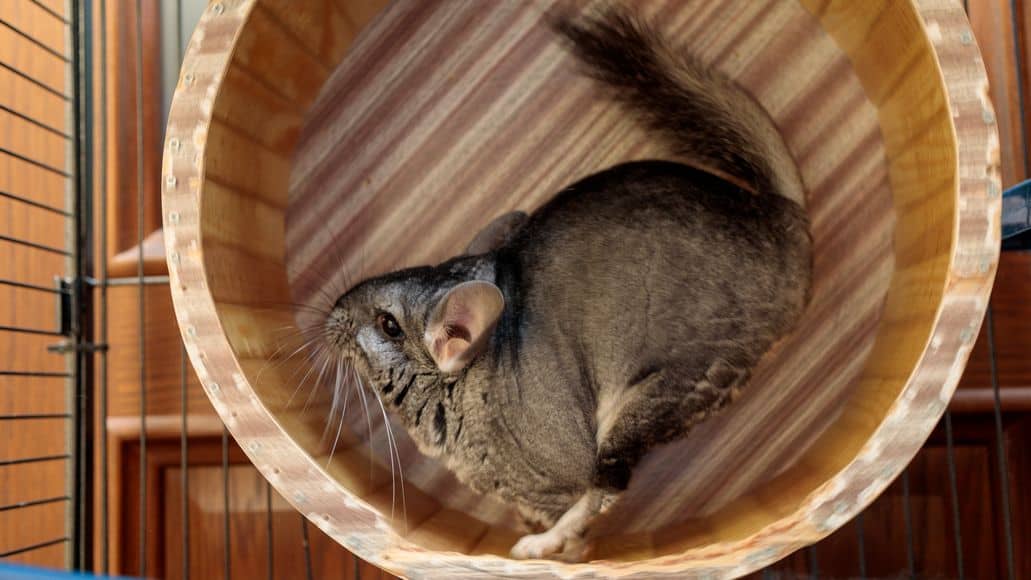
Perhaps you’ve see owners on various forums or FB groups complain about the high costs and you’re now wondering why chinchillas are so expensive.
Well, I have some good news for you. They’re actually not, compared to many other pets.
They do cost more than other rodents, but even then, it’s not a huge difference. And chinchillas live much longer.
Plus, the vast majority of your expenses come down to two things: the chinchilla itself and the cage.
And you can cut quite a bit of costs there. You can also cut down a lot of other initial costs.
And the ongoing monthly expense is extremely low.
Keep reading for a complete breakdown of all the expenses you can expect as a chinchilla owner. It’s probably lower than you think.
Contents
Why Are Chinchillas So Expensive?
Chinchillas are expensive due to the breeder, the fur color, and the cage. These are the most significant cost associated with owning a chinchilla. But you can reduce costs a lot.
The chinchilla itself runs anywhere from $75 to $300. Breeders charge more for chinchillas with certain fur colors, like dark ebony or mosaic. Good chinchilla cages cost between $150 to $350.
These are the most significant costs associated with owning a chinchilla, but they aren’t the only ones.
A few other factors will add to the overall price you pay the day you adopt the chinchilla.
The rest of this article will break down the costs you can anticipate during the adoption process and help you figure out where you can save, and where you should not skimp on costs.

😕Adopting and caring for a new chinchilla can be intimidating and confusing. But it does not have to be.
Be sure to check out my full digital eBook “Avoiding Critical Mistakes: Ultimate Chinchilla Care eBook” to get the best advice, tips, and tricks and supply recommendations to make adopting and caring for a chinchilla much more comfortable and easier to understand.
You can learn more about this eBook offer using the link directly below.
Learn more here:👉 Avoiding Critical Mistakes: Ultimate Chinchilla Care eBook Offer
Chinchilla Itself Is One Of The Two Big Expenses
When I adopted my chinchilla, a few costs came into play. But it is really just two of them that made up the majority of the overall cost.
First and foremost, you have the cost of the actual chinchilla. This is going to depend significantly on the breeder, availability, and the color of your chinchilla.
Some of the colors are more difficult to breed. Often these are your ebony chinchillas or the mosaic chinchillas. When you start looking at these colors, you can quickly get in the range of $200 to $300 for the chinchilla.
But even on the cheapest end (around $75 per chinchilla), these rodents cost significantly more than other rodents. That is simply because they are mor rare.
Also, keep in mind that chinchillas are extremely friendly and social animals.
It’s not rare at all for people to adopt multiple chinchillas. This is a good option if you think you may need to leave your chinchilla alone often or go through periods where you can’t get your chinchilla out for playtime.

Leaving a chinchilla alone and not interacting with it is cruel. If you know this could be an issue, you should definitely consider getting another chinchilla. Of course, that means doubling your cost.
I’m lucky and have the time to interact with my chinchilla often. I’m still planning on getting a second chinchilla very soon, purely because of how fantastic they are. They make good pets. Even around my two-year-old son.
A Good Cage Is The Other Large Expense
Up next, you have the cage. We need somewhere to keep our chinchillas. And this is going to be either the highest or the second-highest cost you encounter when purchasing a chinchilla. Chinchilla cages can cost a lot.
To save you time, feel free to read my post about the best chinchilla cages. It will give you great options for cages for any budget that will keep your chinchilla happy and healthy.
I personally have tried each cage in that article. My favorite and the one I currently use is the Critter Nation 2. You can read my Critter Nation review for details on why I love this cage.
And just to be clear, I’m not alone. In reading forums and FB groups, I’ve seen this cage recommended far more than any other.
That’s because it is large, especially in height, and has multiple shelves and levels. A veritable paradise for any chinchilla, because these little rodents love to jump and climb.
It is also incredibly well built and just the perfect cage all around. But it is not cheap and will set you back over $300. The price does fluctuate.
That said, this is not much more than cheaper cages that offer the bare minimum. You can get much cheaper cages, of course, but those are not suitable for your pets and are basically animal cruelty.
Then you can get high-end cages that are designed to look more like a hutch, with beautiful wood trim around the cage. Some of these can get up over $500.
Additionally, keep in mind that if you have two chinchillas, you will definitely want a dual level cage in which the two levels can be easily separated into two separate cages.
Chinchillas need room to jump, sleep, eat, and poop freely. With two chinchillas in the same cage, you don’t want to be squeezing them in tight.
Although chinchillas are extremely friendly, removing personal space could cause your two chinchillas not to get along as great a few months down the road. This can lead to fur slips or one chinchilla nipping and biting the other chinchillas.
Long story short, chinchillas are friendly, love the interaction with each other but still need some personal space to thrive.
This is another reason the Critter Nation 2 cage is perfect. You can easily separate the top and bottom levels into two distinct cages.
Other Expenses

There are a number of additional expenses you can expect when owning a chinchilla, but these are all much smaller. Some of them are going to be recurring costs, but these are minimal, especially when compared to most other pets.
Your chinchilla will need all of the following items.
- Dust bath container
- Dust for the dust bath
- Shavings or other bedding (like fleece)
- Water bottle
- Food bowl
- Food pellets
- Chinchilla treats
- Hay and a hay feeder
- Wood sticks for chewing
- Nest box
So, what does this all add up to?
Not a lot, to be honest. And that is why chinchillas are not nearly as expensive as some might have you believe.
Chinchilla dust is a must-have and will only run you about $5 to $7 dollars per month, if you purchase a large container and offer your chinchilla one dust bath every few days.
Dust bath houses cost $15 to $20. These are a one-time expense, but you can also just use a regular bowl. I did this at first. I got a house eventually, because it keeps the dust contained, making for much easier cleanup.
Whatever you use as the container, you can’t substitute the dust. It needs to be specially formulated for chinchillas. This is essential for keeping your chinchilla clean.
You should give it 2 to 3 dust baths per week. Don’t worry. If you miss a dust bath occasionally, your chinchilla will remain odor-free.
The only odor that ever remits from my chinchilla is the chinchilla pee on the shavings after about 3 days of not being changed.
I clean my chinchilla cage about every 4 days or, so this usually is never an issue.
The rest of the recurring items on our bulleted list above, including the shavings and bedding, treats and hay, will only run you another few dollars per month.
When it’s all said and done, a chinchilla should never cost you more than about $15 dollars per month.
The only way the cost would exceed this is if you have several chinchillas, vet bills that arise which is somewhat rare with chinchillas or you are buying a lot of items frequently for your pet.
If that’s your cup of tea, more power to you and I enjoy buying items for my chinchilla frequently as well. But you don’t have to and can raise your chin perfectly well on around $15 per month.
As for the other initial costs, none of them are large. Nest boxes can cost around $25, but you can easily build your own as I did. You can also just use a shoe box with some holes in it.
The water bottle I use and recommend (follow the link in the item list above) costs around $35, but you can find plastic ones for much less. Food bowls and hay feeders both cost under $10.
Adding It All Up

Let’s go back and break down some of these costs. Let’s assume you are adopting one chinchilla and are aiming for a rarer color.
We’ll figure $200 for the animal itself.
Let’s say you get the recommended cage and pay $300 for it.
That puts us at $500 already, after the two large expenses.
All the other items you need to by initially should cost around $90, assuming you buy them all and don’t make your own (or opt for cheaper plastic bottles or a bowl instead of a dust bath house, for example). You can reduce this cost considerably, though.
In other words, you’re looking at around $600, if you get a more expensive chin, a top quality cage, and top quality for all the other things you need.
Then you need to figure on around $15 per month ongoing.
In all honesty, it is highly likely that your initial cost will be quite a bit lower. It is also likely that your monthly cost will be under $10. I definitely like to over-estimate and have a happy surprise, than under-estimate and be angry that I’m paying more than I expected.
Finally, I want to mention fleece liners. Using these as bedding saves you from having to buy wood shavings anymore. This obviously saves you money in the long run, but the fleece liners do cost around $80 upfront.
I bought them, because I like the long-term cost savings, plus they make cleanup much easier and the fleece liners are easier on my pet’s feet.
Now that you have an idea of how expensive getting a chinchilla can be, I have one big piece of advice.
PAY IT!
Owning a chinchilla is fantastic. They can recognize you and are loving creatures.
They may or may not be willing to cuddle, but if you are willing to keep them in ideal temperatures and provide a safe and comfortable home, your chinchilla will be thrilled with you. And most of the time, the cuddling comes eventually.
Other Potential Expenses

You aren’t 100% out of the woods yet when it comes to the cost required to own a chinchilla. We’ve covered the necessities, but there are plenty of other fun things to buy.
Of course, you don’t need any of these, but I have found it basically impossible to not keep buying new fun toys for my chin.
Some of these potential expenses are wheels, tunnels, more hiding boxes, custom shelves, and hanging toys that dangle inside your chinchilla’s cage.
Again, these are entirely optional. But they can be hard to resist.
Chinchillas are a pure joy to watch when they interact with their surroundings, so investing in these items brings me just as much joy as it does my pet.
Finally, I just want to mention that you may also have some medical expenses. Chinchillas are healthy pets overall, so you rarely have to take them to the vet, but it can happen. But this costs is generally far, far lower than with other pets.
Why Is Chinchilla Fur So Expensive?
This question is a bit off-topic, but it is one I get a lot and it is loosely related, so I decided to just answer it here.
Chinchilla fur is so expensive, because chinchillas have been going extinct in the wild, to the extent that were even listed as a protected species for a while. But they’ve been making a bit of a comeback.
That still does not mean you should go out and buy clothing or accessories made from chinchilla fur. Please don’t.
The reason the fur is so prized is that chinchillas have the densest fur out of any land animal in the world, with over 80 hairs per follicle. This creates exceptionally soft fur that’s extremely desirable for items such as coats and purses in the fashion industry.
Why Chinchillas Are Expensive: Final Thoughts
The most expensive day when owning a chinchilla is going to be day one. The cost of the animal and the cage alone make up the vast majority of your total expenses.
And that is the reason many people will tell you that chinchillas are expensive pets.
When compared to most other rodents, I suppose that is true. Owning a chinchilla will cost mor than owning a mouse, for example.
But a chinchilla is much more fun, much softer, much cuddlier, and they live much, much longer. Up to 20 years, in fact.
Chinchillas are incredible pets and incredibly smart.
If you are on the fence about adopting a chinchilla, I highly recommend pulling the trigger and giving it a try.
And remember that the other initial costs are fairly low. And the ongoing expenses are incredibly low.
You won’t regret making the plunge, that I can promise. And who knows, maybe a breeder in your area can get you out the door for much less money upfront.
Chili and I wish you the best of luck with your new chinchilla and can assure you that the expense of adopting a chinchilla is 100% worth it.
Do you have anything to add to the discussion?
How much did you pay to get your pet, and how much do you have in monthly expenses?
Be sure to share those thoughts, stories, and concerns by dropping a comment below.
As always, Chili and I appreciate you stopping by and reading today and we will see you again next time.
D says
Please recommend a rescue chinchilla we got our homo tan female for 80$ just go on line and do research they even meet me 1\2 way 🙂